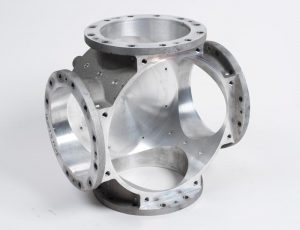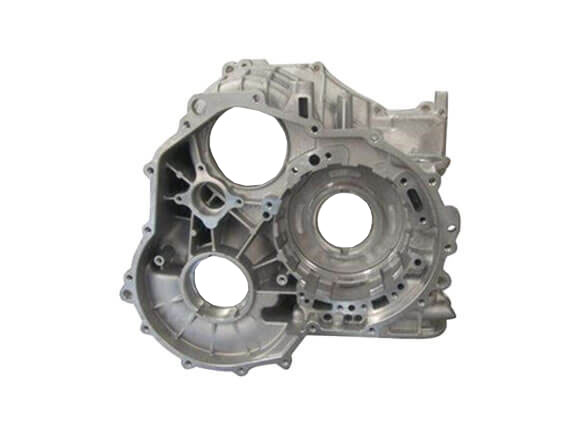Explained: Precision aluminum casting Techniques and Their Applications
Wiki Article
Comprehending Aluminum Casting: A Comprehensive Guide to Its Applications and advantages
Aluminum casting is a procedure that transforms liquified aluminum into solid types through numerous methods. This technique supplies notable advantages, such as lightweight strength and rust resistance. It discovers applications in countless markets, mirroring its versatility. However, comprehending the details of aluminum casting and its best techniques can considerably affect the top quality of the end product. Discovering these aspects discloses the true capacity of aluminum casting in contemporary production.The Essentials of Aluminum Casting
Aluminum casting is a production process that transforms molten aluminum into strong items with numerous strategies. This process begins with home heating aluminum until it reaches its melting point, enabling it to stream right into molds. There are several methods of aluminum casting, including sand casting, pass away casting, and financial investment casting, each appropriate for various applications based upon design complexity and production volume.In sand casting, molds are formed utilizing sand, supplying adaptability for detailed forms. Die casting involves forcing molten aluminum right into a steel mold and mildew under high stress, causing repeatable and specific parts. Investment casting, on the various other hand, makes use of a wax pattern that is covered with ceramic to create thorough parts.
After the aluminum solidifies and cools down, the molds are removed, exposing the completed products. This casting process is essential in different sectors, consisting of automobile, aerospace, and consumer goods, making it possible for the production of long lasting and lightweight elements.
Benefits of Aluminum Casting
Among the vital advantages of aluminum casting hinges on its ability to create light-weight yet solid parts. This special combination makes aluminum an ideal selection for numerous markets, including automotive, aerospace, and consumer goods. The fundamental corrosion resistance of aluminum additionally improves the sturdiness of the cast parts, prolonging their life-span and decreasing the demand for maintenance.
Furthermore, aluminum casting enables detailed styles and complex geometries, which can lead to much more effective and visually pleasing products. The product's outstanding thermal and electrical conductivity additionally broadens its applications, especially in electronics and heat exchangers.
Aluminum recycling is very effective, contributing to environmental sustainability and lowering manufacturing prices. In general, the advantages of aluminum casting position it as a functional and practical remedy for suppliers looking for to maximize efficiency while decreasing weight and source use.
Common Approaches of Aluminum Casting
While various strategies exist for aluminum casting, each technique uses distinctive benefits customized to details applications. One of the most common methods consist of sand casting, pass away casting, and investment casting.Sand casting, recognized for its flexibility, uses sand molds to develop complex forms and is ideal for both little and large production runs. Die casting, on the other hand, employs high-pressure shot of liquified aluminum into steel molds, causing smooth surface areas and accurate measurements, making it suitable for automation.
Investment casting, typically referred to as lost-wax casting, includes producing a wax pattern coated with a ceramic shell. Precision aluminum casting. Once the wax is dissolved, liquified aluminum is put into the dental caries, producing intricate styles and excellent surface coatings
Each of these techniques plays a necessary function in the aluminum casting landscape, providing specific advantages that cater to differing production needs and manufacturing scales.
Applications Throughout Industries
The convenience of aluminum casting techniques enables for a vast array of applications throughout different sectors. In the vehicle industry, lightweight aluminum parts index improve gas effectiveness and performance, adding to the expanding need for electrical cars. Aerospace sectors utilize aluminum castings for their strength-to-weight ratio, ensuring security and longevity in airplane manufacturing.The building and construction industry gain from aluminum casting through architectural aspects and structural components that stand up to deterioration and need minimal maintenance. Additionally, customer electronic devices makers employ aluminum spreadings for structures and housings, stabilizing appearances with performance.
In the marine sector, aluminum castings are preferred for watercrafts and marine devices due to their resistance to deep sea rust. Moreover, the medical area makes use of aluminum spreadings in surgical instruments and devices, making certain accuracy and integrity. In general, aluminum casting's flexibility allows it to meet the varied demands of numerous sectors, making it an important manufacturing procedure.
Ideal Practices for Effective Aluminum Casting
Successful aluminum casting depends on a combination of cautious preparation, precise implementation, and detailed top quality control. Initially, choosing high-grade aluminum alloys is vital, as they directly influence the casting's buildings and efficiency. Correct mold and mildew layout is essential, guaranteeing that it fits thermal tightening and minimizes issues.During the melting procedure, staying clear of and preserving the right temperature level contamination are vital to achieving a consistent alloy. Furthermore, using effective putting methods can improve the filling of molds, lowering the possibility of air pockets or additions.
Post-casting, executing thorough examination techniques, such as aesthetic assessments and non-destructive testing, ensures that issues are identified early. In addition, using extensive quality assurance procedures throughout the process aids keep uniformity and reliability in the last products. By sticking to these ideal methods, manufacturers can substantially boost the success and efficiency of their aluminum casting procedures.
Often Asked Concerns
What Precaution Should Be Taken Throughout Aluminum Casting?

Exactly How Can Flaws in Aluminum Castings Be Reduced?
Issues in aluminum spreadings can be minimized with mindful mold style, appropriate temperature control, ensuring tidy steel, making use of appropriate putting techniques, and carrying out comprehensive assessments to recognize and attend to issues before settling the casting procedure.
What Is the Environmental Effect of Aluminum Casting?
The environmental influence of aluminum casting consists of energy-intensive processes, greenhouse gas discharges, and resource removal worries. Nonetheless, innovations in recycling and lasting techniques can minimize these results, advertising an extra green approach to aluminum production.Can Aluminum Casting Be Recycled?
Yes, aluminum casting can be reused successfully. The recycling procedure needs significantly less energy contrasted to primary aluminum manufacturing, making it an ecologically pleasant option that adds to source preservation and decreased carbon exhausts.What Are the Prices Connected With Aluminum Casting Processes?
Prices linked with aluminum casting procedures consist of material costs, labor, tools maintenance, energy usage, and mold and mildew fabrication. These variables can differ substantially based upon production scale, complexity of designs, and details production techniques used.Aluminum casting is a procedure that transforms liquified Full Article aluminum right into solid types with various techniques. Aluminum casting is a production process that transforms liquified aluminum into strong things through numerous methods. While various strategies exist for aluminum casting, each technique provides distinct benefits customized to certain have a peek at these guys applications. The environmental influence of aluminum casting consists of energy-intensive processes, greenhouse gas exhausts, and source removal issues. Prices connected with aluminum casting procedures include material costs, labor, equipment upkeep, power usage, and mold construction.
Report this wiki page